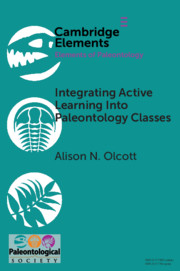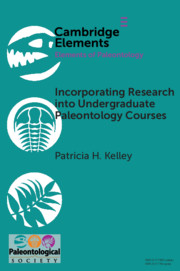Integrating Active Learning into Paleontology Classes
The educational benefits of replacing in-class lectures with hands-on activities are clear. Such active learning is a natural fit for paleontology, which can provide opportunities for examining fossils, analyzing data and writing. Additionally, there are a number of topics in the field that are exciting to geology majors and non-majors alike: very few can resist the lure of dinosaurs, huge meteor impacts, vicious Cretaceous sharks or a giant Pleistocene land mammal. However, it can seem difficult to introduce these techniques into a large general education class full of non-majors: paleontological specimens provide a natural starting point for hands-on classroom activities, but in a large class it is not always practical or possible to provide enough fossil material for all students. The Element introduces different types of active learning approaches, and then explains how they have been applied to a large introductory paleontology class for non-majors.
Product details
November 2018Paperback
9781108717915
75 pages
230 × 153 × 3 mm
0.07kg
1 b/w illus. 3 colour illus. 2 tables
Available
Table of Contents
- 1. Introduction
- 2. Types of active learning activities
- 3. Benefits of active learning
- 4. One model how to integrate active learning into a paleontology class for non-majors.



